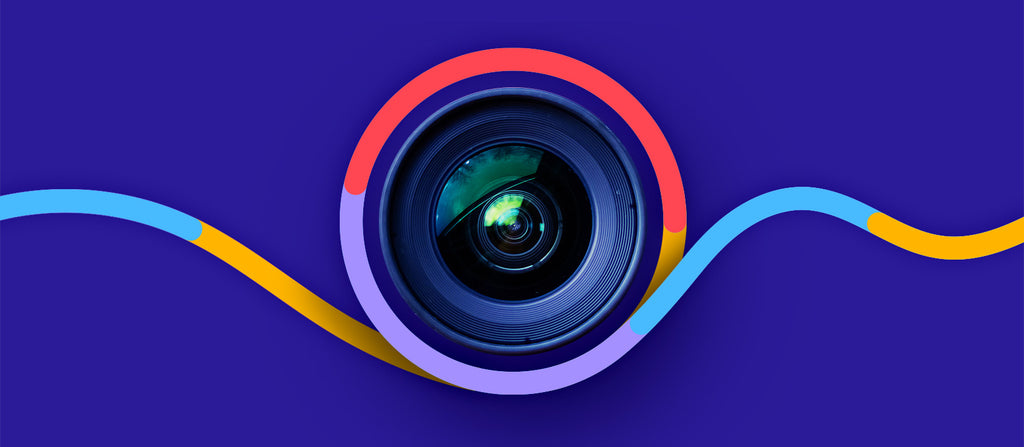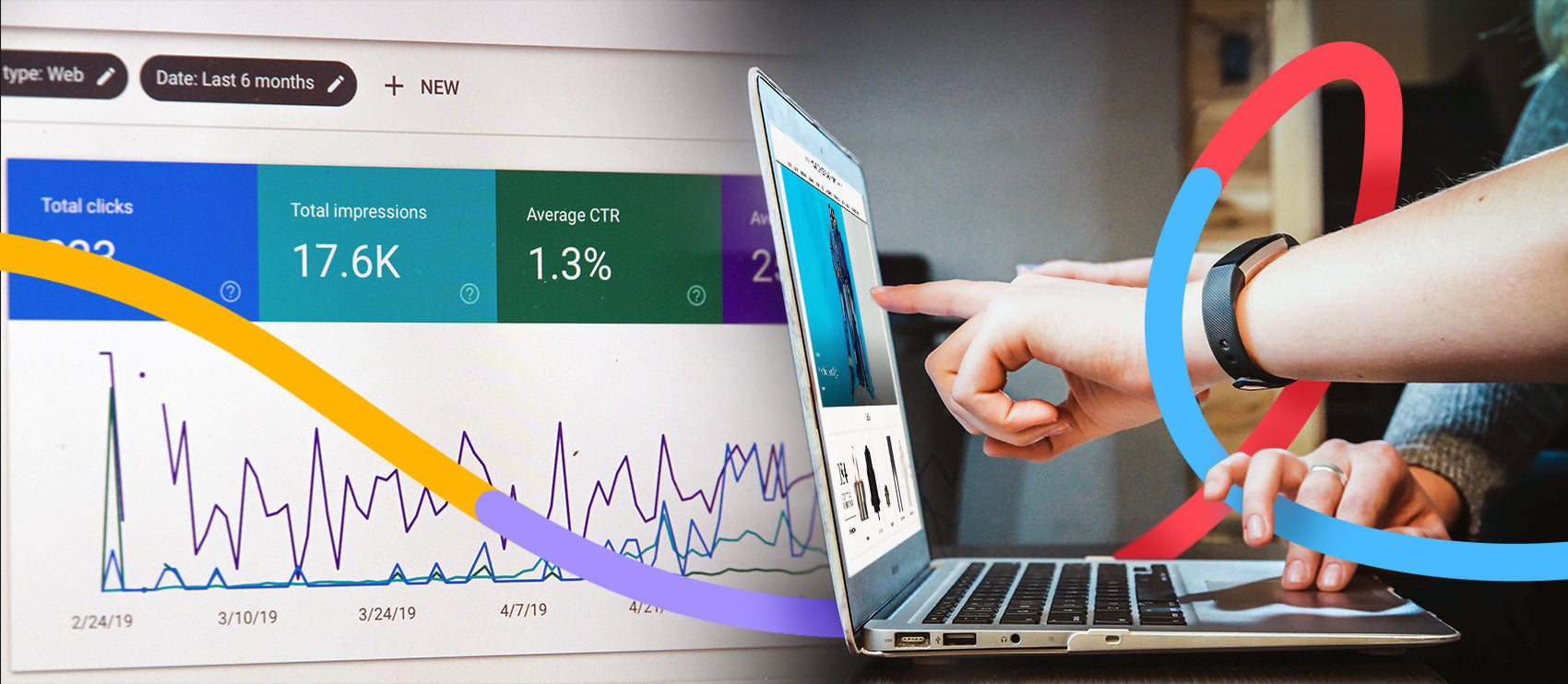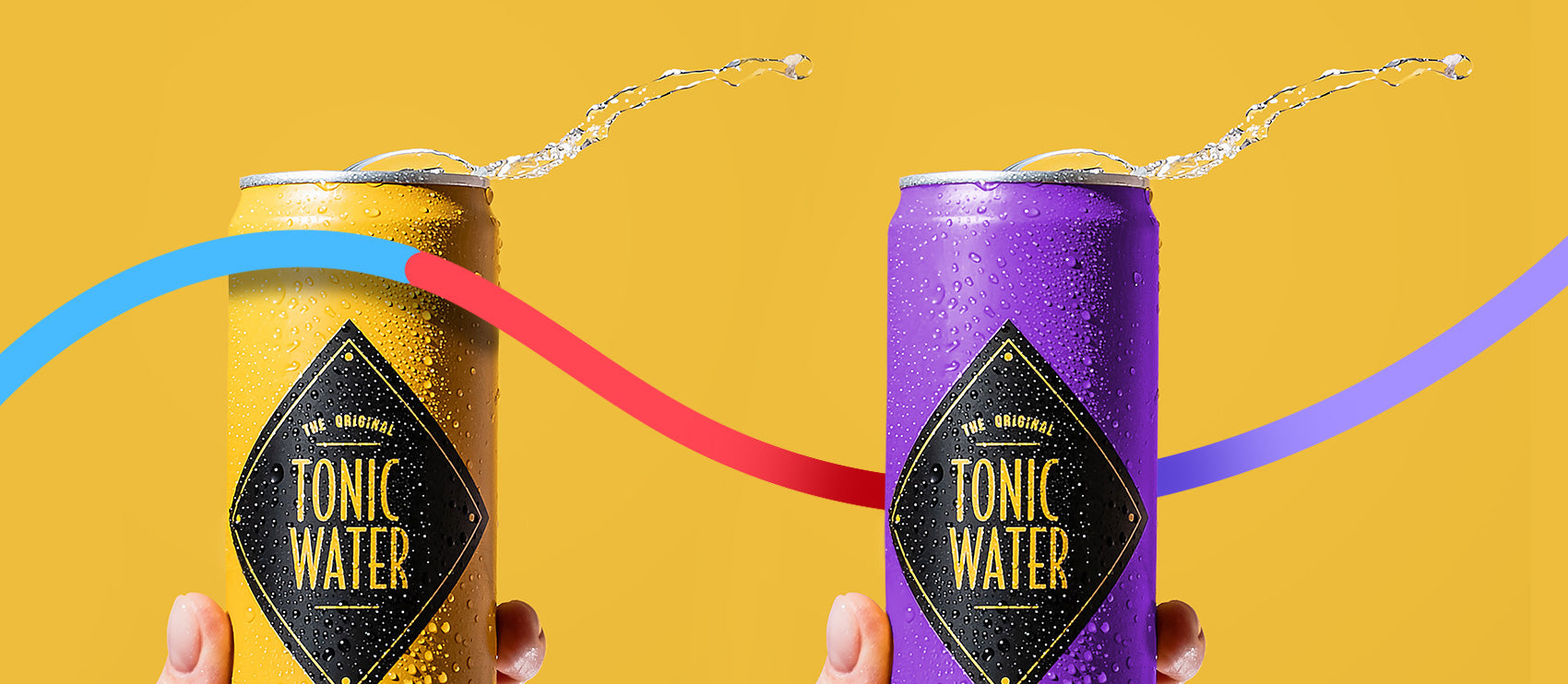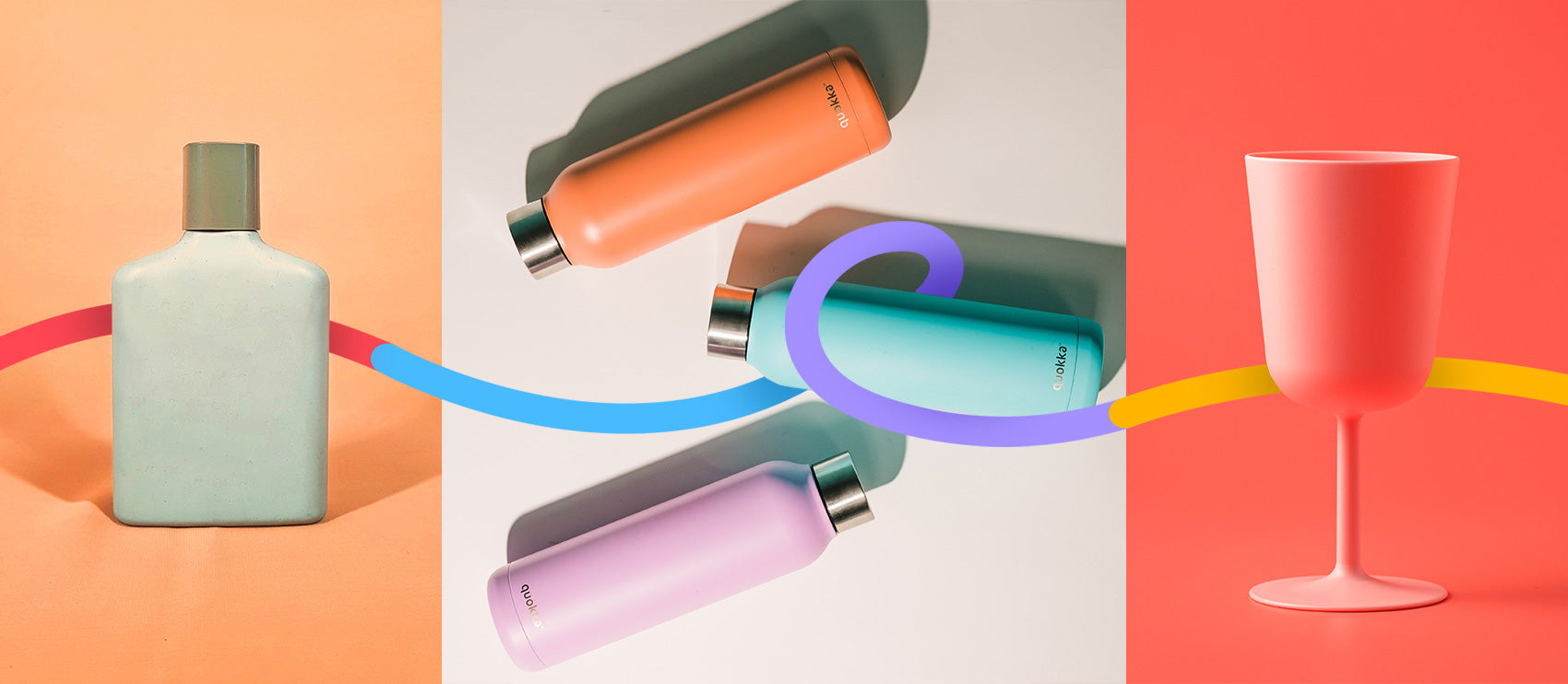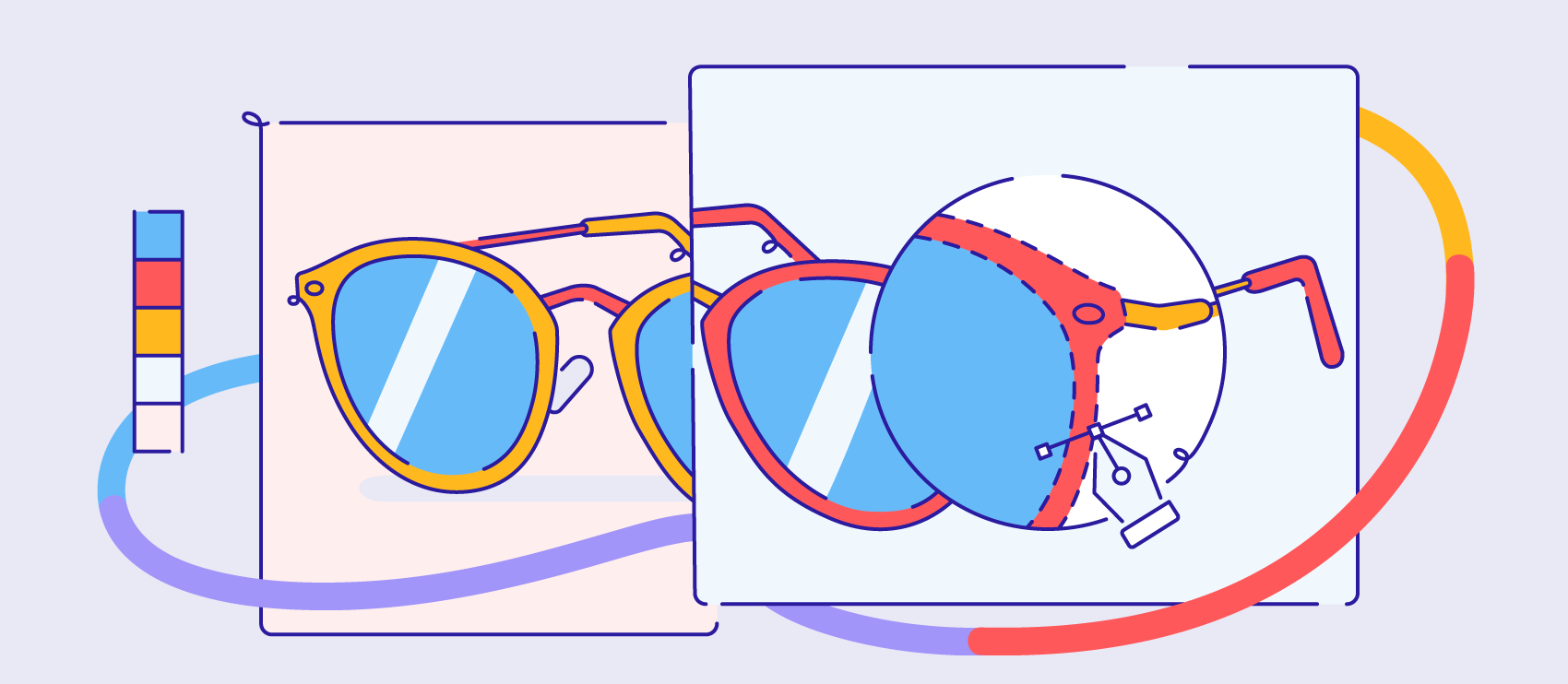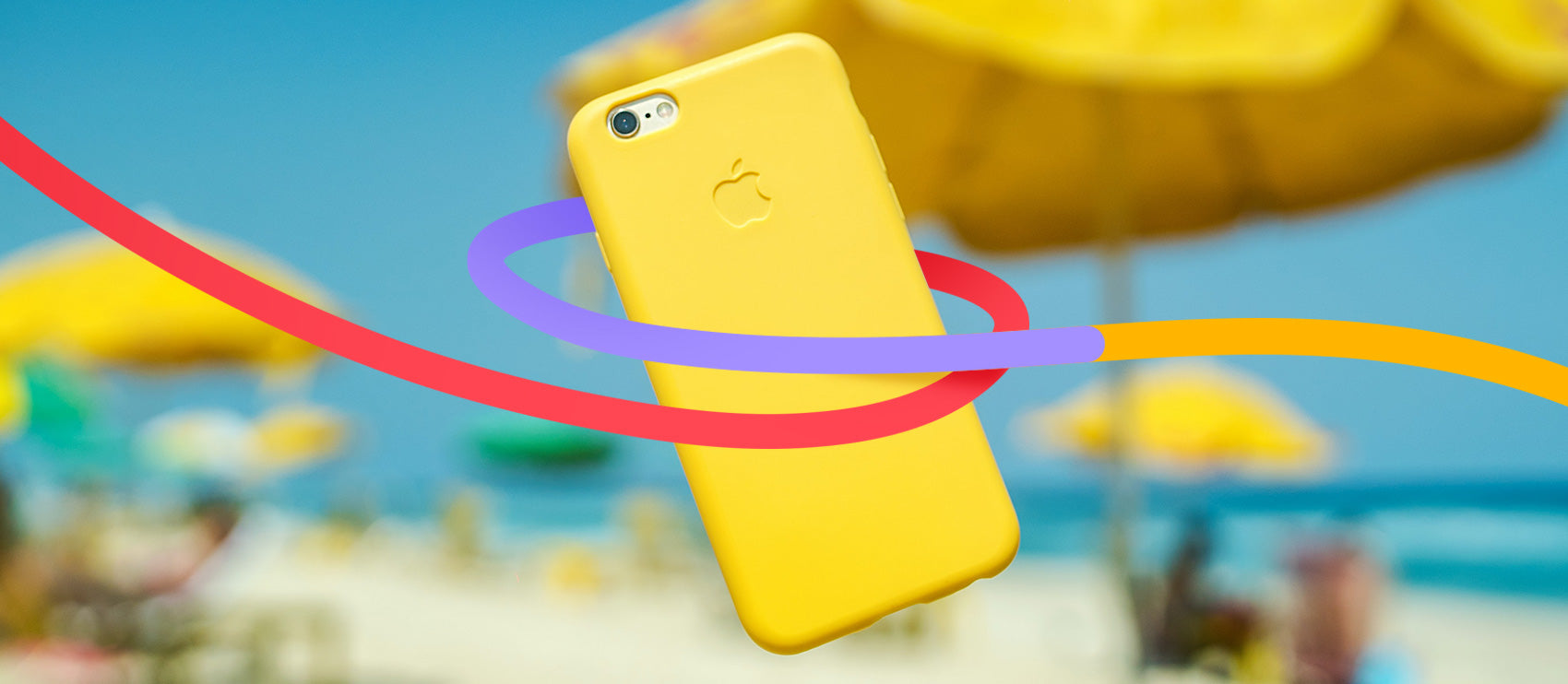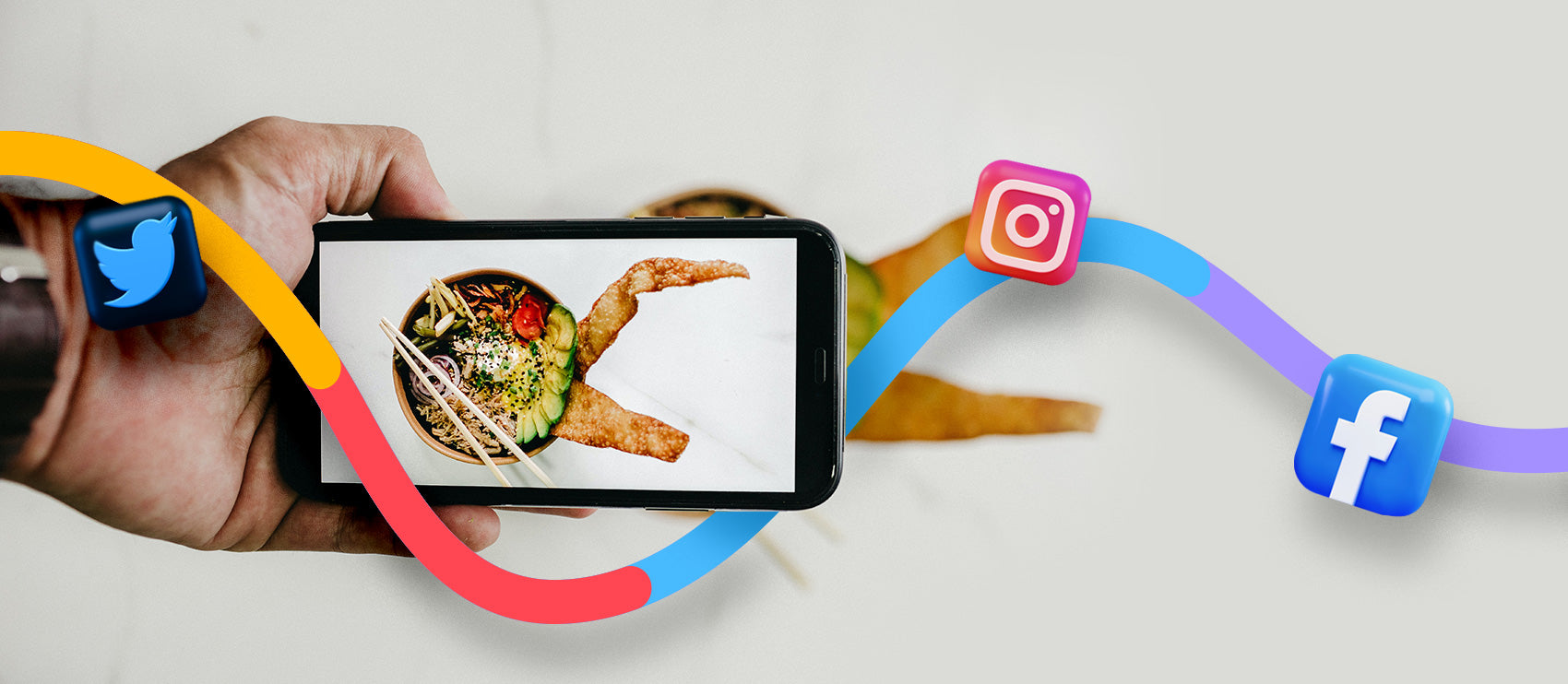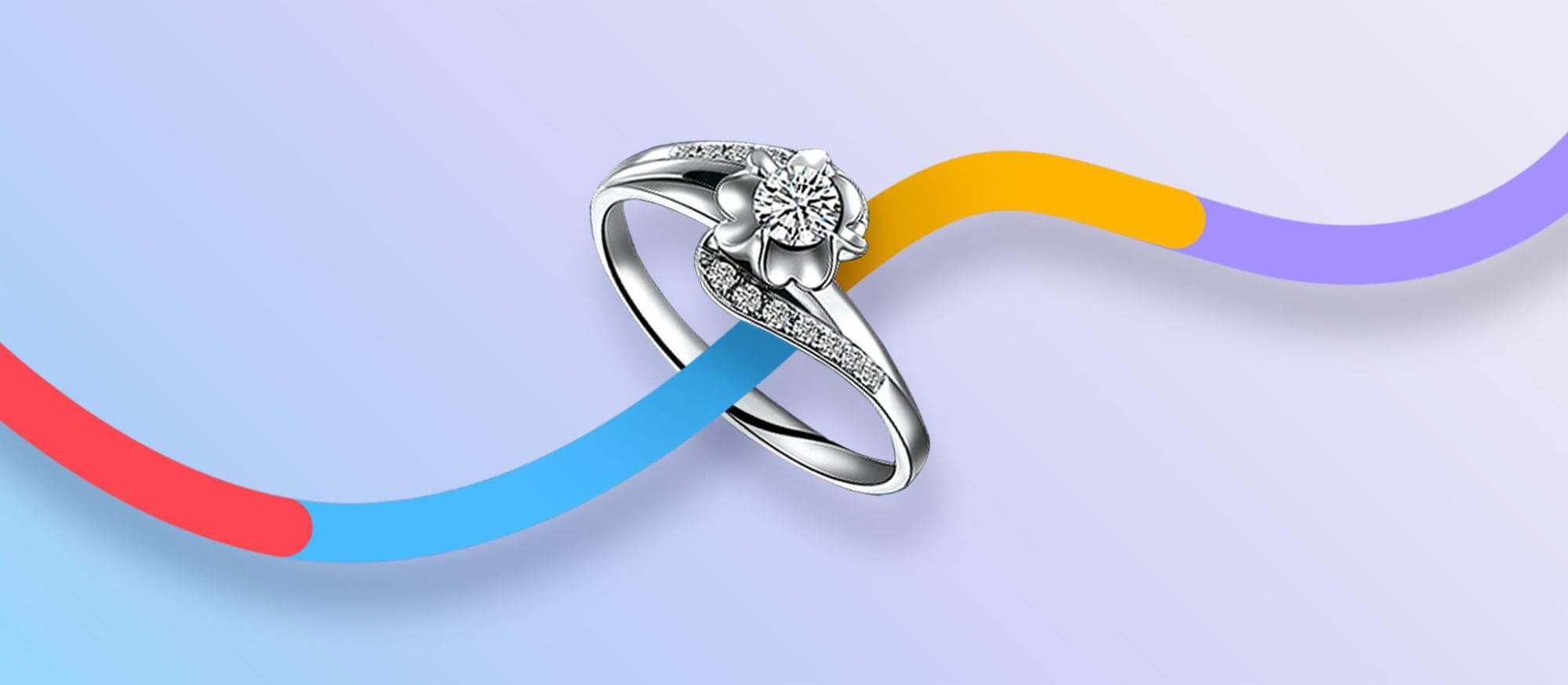Just as incorporating product videos into your marketing mix can pay massive dividends, learning the ropes of 360-degree photography can be a welcome addition to your product photo toolkit.
In this article, we'll explore everything you need to know about 360-degree product photography and what it takes to get it right.
What is 360-degree photography?
360-degree photography is a method of photography that captures the entire surroundings of an object in full-circle form. Generally, this is done by placing the desired object on a rotating turntable and capturing multiple photos from a variety of angles. The images are then pieced together in post-processing to create a sphere view of the object.
360-degree product photos, in particular, allow consumers to see the image in significantly more detail and get a better feel for the product.
While 360-degree photos and augmented reality (AR) are often used interchangeably, it's important to note the difference.
Although there’s overlap between the two, AR is significantly more involved from a production perspective, whereas 360-degree photos can be done on virtually any budget. AR is the intersection of the real world and interactive modifications such as sound, visuals, and computer generated elements, while 360-degree photography involves standard photos with a 360-degree view.
Let's look at some of the benefits of using 360-degree photos for your product photography.
Benefits of 360-degree product photography

Drive more conversions
As you might imagine, a 3D image of a product can offer much more context than a traditional 2D photo. From shoes to dresses and even hardware, a full 360-degree view allows consumers to see exactly how the item may look and feel in real life—from every angle.
Presenting your products in an effective way online is becoming increasingly important, especially with more and more folks shopping in different ways.
As BigCommerce shared in their COVID Ecommerce Trends report, 67% of consumers report they shop differently after COVID-19—many of whom shop online more.
“Retailers stepped up to the challenge ... by embracing emerging technologies that created connections with shoppers or made their customer experience more convenient.”
The images and product photos you use on your site play an instrumental role in putting your best foot forward. Testing new technologies and working to optimize your brand assets goes a long way in driving sales and building trust.
Boost website engagement
There’s only so much you can do with a 2D image. With 360-degree images and animated GIFs, your customers and audience can really get to know the product. Because your 360-degree photos are interactive chances are high your potential buyers will spend more time on your website, giving you more opportunity to share why you're a good fit.
Speaking to Cappasity on the benefits of 3D images, Aurelia Ammour Co-Founder and CEO of Shoes 53045 shared why she believes 360-degree photography dramatically improves the customer experience and can increase sales:
"By offering the possibility to discover our shoes from every angle, it is the perfect technology to improve customer experience. We have noticed that our clients now spend more time on the product page than they did before. The Time on Page has been improved by 18% thanks to interactive 3D images."
Reduce returns
Far from a no-name brand, Home Depot allegedly reduced its ecommerce return rates by around 18% after investing heavily in 360-degree photography. Given the nature of what they sell, 360-degree photos were particularly effective and allowed them to engage and educate potential customers and reduce returns. Being able to see the full view of a specific type of screw or drill for example, helps ensure the right choice from the start.
Returns are not only costly, they can lead to a bad customer experience as well. Compared to in-store purchases, ecommerce sees a 2x increase in returns. Some of the most common reasons for returns such as sizing and style can be reduced through the use of 360-degree photography.
Beat the competition
As consumer shopping habits continue to shift to digital, going a step further with your product photos is an opportunity for you to stand out. From optimizing your product pages, to offering excellent customer service, you want to take advantage of every opportunity to stand out.
360-degree photos are an accessible way for most businesses to add a little more pop to their product photos for little cost, and give the ability to demonstrate how the product works in the wild. With ecommerce known to be especially cutthroat, 360-photos are a powerful way to differentiate your brand and not get lost in the noise.
While your competition focuses on the next shiny marketing tactic, you can reap the benefits of 360-photos for many years to come.
Who should use 360-degree product photography

Most ecommerce brands would benefit from experimenting with 360 photos to some degree. But 360-degree photography really shines when you’re selling a product with multiple visual features, such as a backpack or complicated hardware tools, for example. With a full 360-degree view, you can showcase the entire product and allow your audience to see every nook and cranny.
Selling purses? Show the inside and out. Make custom nightstands? Show what they’re like with drawers open and closed.
Here are a few industries that could benefit greatly from 360-degree photos.
- Fashion: The more ways you can show a shirt, sweater, or dress the better. 360-degree photos are an excellent way to make fashion items jump off the page.
- Tools: From tools to other hardware, a full view of each item can help ensure you're capturing every
- Tech and wearables: From smart watches to the latest high powered portable fan, 360-degree photos are an excellent way to showcase the latest in tech.
- Retail: 360-degree photos give you the ability to bring some of that "retail magic" to anyone viewing comfortably from home or on the go.
- Cars: A great way to show potential customers what the car looks like before they come by for a test drive!
- Furniture: As with our example with Heal’s, furniture such as couches can really benefit from a 360-degree view.

Of course, 360-degree photos work extra well for all things apparel. Because fashion and apparel are so personal, giving an extended view helps your prospective customers see themselves in that jacket or dress.
Examples of brands using 360-degree product photography
One of the best ways to get better at 360-degree product photography, aside from actually doing them yourselves is looking at examples. Let's dive in.
Jazmin Chebar
Fashion brand Jazmin Chebar has made an investment in its product photography. In the example below, you can see a detailed 360-degree view of its Vitro T-Shirt. Notice that in addition to those and regular 2D stills, there are options to zoom in on and rotate the model.

As the model rotates, notice how she places her hands in and out of her pocket. This is exactly what we’re talking about when we say 360-degree photography can help you show your product in multiple lights.

Here’s another example:

Although the product photo background is plain, Jazmin Chebar does a great job showcasing each outfit in a variety of different poses.
Heal’s
While going to the furniture store may have previously been a popular pastime, the reality is more and more furniture shopping is being done online.
Furniture and lifestyle brand Heal’s really takes their product photography to the next level by showcasing their premium couches in incredible detail and 360-degree view.

What’s great about their setup is that by clicking a different color scheme you can instantly see the changes and continue to rotate the image. This is great for getting an idea of what color might fit in your living room.
When possible, be sure to include all variations in your 360-degree view, it really does make a difference.
Vera Bradley
Lifestyle brand Vera Bradley takes the guesswork out of purchases with a few simple 360-degree shots when showcasing its luggage.
While a little more involved than a standard 360-degree product shot, as you spin the image, the luggage opens up, showing exactly what it will look like when it arrives at their door.


Fitbit
Wearable tech accessories brand Fitbit also has also invested heavily in 360-degree photography. Its product page allows shoppers to spin the wearable around giving them a complete view of what it looks like.
After they’ve had a chance to take it for a spin, a 2D photo further enhances the viewing experience showing a model with the wearable on their wrist.

While it’s not the most sophisticated 360-degree viewing experience, it’s simple and effective. The photo replicates the feeling of being at the store playing around with the watch physically.

How to incorporate 360-degree product photography for your brand
A turntable and basic camera gear is really all you need to get started—and a few more items will make the shoot all that more productive. But again, simplicity is key.
Here’s a video where expert photographer Dustin Doby shows you how to get up and running with minimal gear and cost.
Here’s a quick list of some of the tools Doby recommends to make your shoot go according to plan:
- Surface support plate
- Bottle support plate
- Wireless remote
- Turntable
- Clamps
The great thing about 360-degree product photos (like standard photos) is you can use them on your homepage, product pages, and even social media. Turning your shots into animated GIFs will significantly extend the shelf life of your efforts and add some life to your marketing efforts across the board. You can use your 360-degree photos not only on your product pages, but in your email marketing and social media campaigns as well.
You can use any of these tools to make your animated GIFs:
- Wondershare Filmora: A powerful and robust video editing platform used by over 85 million created, Filmora makes it easy to create GIFS, videos, and more. Starting at $49.99 USD a year.
- Make A GIF: A free tool with a premium offering, Make A GIF allows you to quickly create GIFs from a variety of media formats including Facebook, YouTube, vidoes, and more.
- GIF Maker: A simple and free tool to quickly make GIFs from images.
- PTGui: A free and paid tool that allows you to quickly create high quality panoramas. Great for photos done outside with unique backgrounds or other scenery.
Start small
Keep it simple to make it approachable at first. Choose one or two of your most basic products and use your turntable or lazy susan to give them a spin, taking multiple shots as you spin. Here's a quick video showing how to use a lazy susan for the DIY crowd.
Remember, having to coordinate a model to showcase a jacket is much more complex than doing 360-degree shots of your best selling beanie.
When shooting 360-degree photography, especially for the first time, we recommend taking a few extra photos to give yourself more options during editing and post production.
Pro tip: when doing 360-degree shots, those gridlines on your camera are your friend!
To delegate or not to delegate?
If you have the time and resources, learning to do this type of photography yourself can certainly be valuable—but there's nothing wrong with getting help where needed, especially if it's not your strong suit.
Often we creatives and entrepreneurs try to do everything, which gives us less time to do what we do best.
If you're genuinely curious about the process, by all means give it a try a few times. But if you need a hand, we put together some great tips on how to hire a photographer for your needs.
Go full circle with professional editing
As always, the shoot itself is only part of the process. With 360-degree product photography especially, photo editing is incredibly important. Not investing in quality editing can very easily make your 360-degree photos look amateurish or low quality.
The last thing you want is for a shoot you thought went well, turn out photos that just won't work.
This short video does a great job of explaining the basics of editing 360-degree photography.
While watching a few editing and Photoshop tutorials can help you with the basics, it won’t cover everything a professional editor knows to look out for. Key editing elements such as image masking, shadows, photo retouching, and more play an important role in making your 360-degree photos pop. And if you need a hand perfecting your 360-degree photos, hiring a professional editor can save you loads of time and money.
Not happy with the shadows in your shot? You can learn how to add a natural shadow in Photoshop to fix them in post-processing.
The future of product photography
360-degree photography has been around for many years, but the rise of AR and ecommerce has made it more relevant than ever before. 360-degree photography helps take your brands and products to the next level for a very small amount of work.
Although it may seem intimidating to give 360-degree photography a try, consider giving it a test run during your next photoshoot. Experiment with one or two simple products and build momentum from there.
Take the stress out of editing product photos, with done for you edits by pro designers

